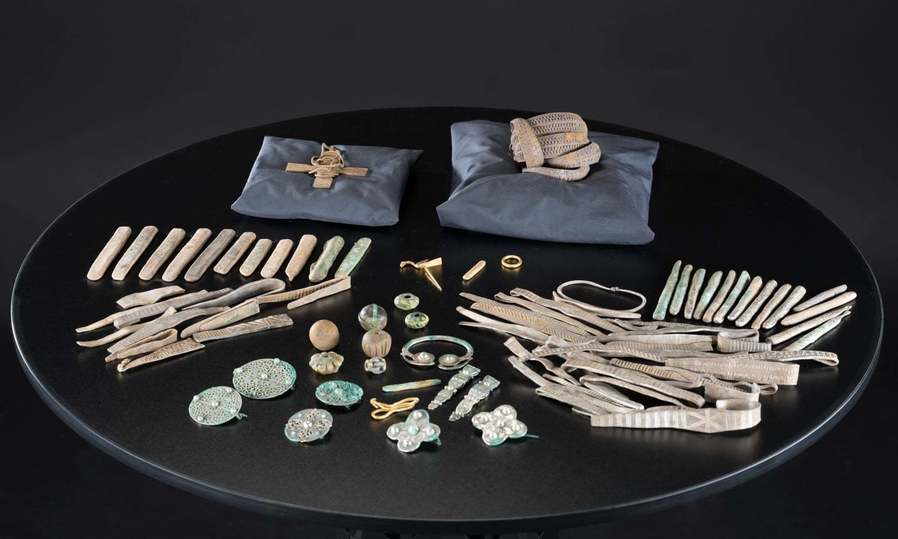A spectacular Anglo-Saxon silver cross was found under a crust of mud 1000 years ago. The quality of the sazu’s decoration indicated that its owner was a high-ranking cleric or even a king.
It was discovered back in 2014 in a plowed field in western Scotland as part of the Galloway Hoard, the richest collection of rare and unique Viking Age artefacts ever found in the UK or Ireland. The cross was bought by the National Museum of Scotland. (NMS) in 2017.
There was a noticeable gold leaf on the cross. The cross, according to experts, is the greatest example of Anglo-Saxon metalwork. The Equal Arms Cross was created by a jeweler of outstanding craftsmanship, writes The Observer. It depicts the symbols of the four evangelists to whom tradition attributes the Gospels of the New Testament: St. Matthew (man), Mark (lion), Luke (cow), and John (eagle).
Martin Goldberg, Chief Curator of the Early Middle Ages and Viking Collections, spoke about the cross.
“It’s just amazing. In fact, there are no analogues. This is partly due to the time period from which it comes. We imagine that many church treasures were stolen from the monasteries – this is what historical records of the Viking Age describe to us. This is one of the relics. The workmanship is incredible. It’s a real honor to see it 1000 years later, ”said Goldberg.

Galloway’s treasure was buried at the end of the 9th century in Dumfries and Galloway, and was discovered by a metal detector in 2014. The cross was among over 100 gold, silver, and other items, including a beautiful bird-shaped gold pin and a silver-gilded vessel. Incredibly, the fabric in which the items were wrapped also survived among organic matter.
Goldberg added: “In the early 10th century, new kingdoms arose in response to Viking invasions. The dynasty of Alfred the Great laid the foundations for medieval England, and Alba, the kingdom that became medieval Scotland, is first mentioned in historical records. “
According to Goldberg, Galloway was part of the Anglo-Saxon Northumbria, and in the Irish chronicles as early as the 10th century it was called the Saxon coast. But the area was to become the domain of Galloway, named after the Gaul Gadil, a people of Scandinavian origin who spoke Gaelic and dominated the Irish Sea area during the Viking Age.
“The mixed Galloway hoard material exemplifies this dynamic political and cultural environment,” added Goldberg.
“Cleaning revealed that the cross, made in the 9th century, was decorated in the late Anglo-Saxon style. This is similar to what would be ordered at the highest levels of society. The first sons were usually kings and lords, the second sons became high-ranking priests. Most likely, he is from one of these aristocratic families, ”the expert said.
The pectoral cross with its intricate spiral chain has survived, on which it could be suspended from the neck located on the chest. The chain shows that the cross has been worn. Goldberg said: “You can almost imagine someone taking it from their neck and wrapping it in a chain to bury it in the ground. There is something personal about him. “